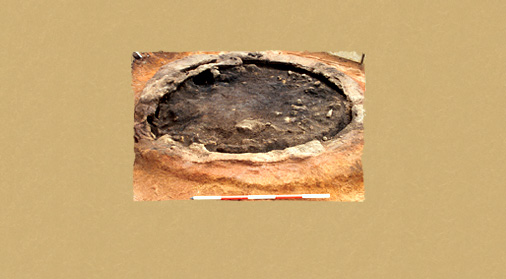It has proved possible in recent years to gain more information about Hong Kong during the Han dynasty (206 BC – AD 220), as pots with stamped seals, typical of pottery of that era, have been unearthed in both Lung Kwu Sheung Tan and So Kwun Wat. In addition, a hoard of over 60 copper Ban Liang and Wu Zhu coins was discovered in So Kwun Wat in 2000, among which were also fragments of bamboo mats and linen items that are particularly precious, as organic materials are normally not preserved in Hong Kong’s acidulous soil. The same site was also found to be home to a Han burial, discovered in 2008. The burial contained bronze funerary objects, including a bronze basin and a bronze eared cup alongside an iron axe and two slotted jade rings. This burial in So Kwun Wat is another Han burying place with bronze objects subsequent to the Lei Cheng Uk Han Tomb famously unearthed in 1955.
After the Tang dynasty (AD 618 – 907), the history of Tuen Mun can be traced in several documentary records, and these have now been supplemented and confirmed by material proof in the form of archaeological finds. Examples here include the ruins of Tang dynasty kilns and green-glazed ceramic ware found in Siu Lam and Lung Kwu Tan, while Song dynasty ceramic ware as well as the ruins and relics of dwelling structures have been unearthed in areas such as Siu Hang Tsuen, San Hing Tsuen and Lung Kwu Sheung Tan. During the rescue excavations at So Kwun Wat, numerous Ming dynasty (AD 1368 – 1644) graves were discovered that provide valuable information for the study of the funeral customs of that era. In addition, a kiln found at the Nai Wai site illustrates the development of the handicraft industry in the late Qing period.



